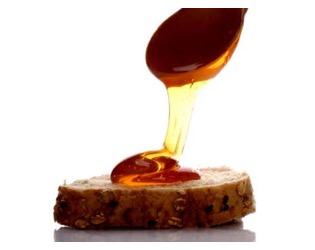Honey and Health
Benefits of Honey

The benefits of honey bears on humans are summarized in the following:
• Reduces the harmful effects of chemotherapy in cancer patients
• Improves oral health
• Is a Healthy food preservative
• Strengthens antioxidant system
• Improves athletic performance
A thorough study of the most recent scientific research shows that honey can procrastinate the oxidation of various food, especially meat, for several days, making it a food preservative of high quality. Additionally, honey was shown to contain similar amounts of antioxidant ingredients as fruits, so it is an essential ingredient against harmful free radicals in our body. Honey protects us from cancer, heart disease, while it is one of thefoods that fights ageing.
Regarding physical performance, scientific studies have shown that consuming honey directly provides us with carbohydrates, which improves our resistance, as carbohydrate drinks or gels that are widely used during various sport activities. Moreover, the consumption of honey in combination with a protein supplement after exercise, helps to faster transport of the protein in the muscle groups, resulting in better muscle restoration. The daily consumption of a small amount of honey helps to maintain stable blood glucose values . Antioxidants and some other ingredients of honey also seem to have antibacterial action, that is why honey helps fighting against peptic ulcers, infections and inflammation.
In conclusion, honey is a sweetener with significant advantages compared to sugar, thus, we have to include it in our diet. Use honey as much as possible and reduce daily sugar consumption.
Source: www.iatronet.gr
Healing Properties Of Honey
Antibacterial activity: honey has healing properties. Is antiseptic and germicide because of its hydrogen peroxide content, the acidity and high concentration of sugar. It helps
wounds healing, stops blood on the wounds and trauma and provides sterility. Its antibiotic and alkaline properties help to disinfect the mouth and prevents dental caries.
Metabolism: Honey fights obesity caused by defective metabolism, hyperinsulinism and water retention in tissues.
Heart-Circulatory: Constant consumption of honey by people suffering from heart disorders, has resulted in the improvement of their situation. Honey sugars, particularly glucose, is necessary for the contractions of heart muscle and also give heart the necessary energy. Sugar and acetylcholine contribute in blood vessels dilation and lower blood pressure.
Anemia: The consumption of honey increases the percentage of hemoglobin, particularly in children, mainly due to the iron and copper content.
Stomach and intestine diseases: Honey has great mineral salts content and reduces acidity in stomach. Additionally, honey helps treatment of peptic ulcer and duodenum. Finally, honey is considered as one of the best natural light laxatives.
Liver: The glucose in honey completes the reserves of glycogen in liver. The liver is body's “factory” where useful substances for human body are produced and harmful substances such as toxins are decomposed. The presence of glycogen enhances liver’s work and increases body's resistance to infections.
Kidney: Honey contains very little protein and almost no salt, substances forbidden to people who suffer from kidney diseases. Besides honey, is a hypertonic glucose solution, thus strengthens and enhances the body. It is also diuretic.
Finally, honey due to its high fructose content, in combination with enzymes, restores sobriety to drunk people, especially if dissolved in lemon juice.
Source: www.diet-net.gr

What is Apiculture?
Apiculture is the management and study of honeybees.
Apiculture is the management and study of honeybees.
Apiculture is derived from the honeybee's Latin name Apis mellifera, meaning ‘honey gatherer’. Since bees do not collect honey but nectar from which honey is made, the scientific name should actually be Apis mellifica meaning ‘honey maker’.
Although apiculture refers to the honeybee, the vital role all bees play in the pollination of crops and flowering plants has caused apiculture to also include the management and study of non-Apis bees such as bumblebees and leafcutter bees.
Some 90 million years ago, flowering plants first appeared on earth. The wasp-like ancestors of bees took advantage of the food made available by flowers and began to modify their diet and physical characteristics.
Since then, flowering plants and bees co-evolved. This eventually led to a complete interdependence, meaning that flowering plants and bees cannot live and reproduce without each other.
Since then, flowering plants and bees co-evolved. This eventually led to a complete interdependence, meaning that flowering plants and bees cannot live and reproduce without each other.
The genus Apis is comprised of a comparatively small number of species including the western honeybee Apis mellifera, the eastern honeybee Apis cerana, the giant bee Apis dorsata, and the small honeybee Apis florea.
Honeybees are indigenous to the Eurasian and African continents and were introduced to the Americas and Australia by European settlers.
The western honeybee is comprised of some 24 races or sub-species. The African honeybee, sometimes referred to as ‘Killer bee’, is a race of the western honeybee and can therefore cross-breed.
Bees collect pollen and nectar. Pollen is the protein source needed for bee brood development while nectar is the carbohydrate source providing energy.
Nectar is a sugar solution produced by flowers containing about 80% water and 20% sugars. Foraging bees store the nectar in the ‘honey sac’ where the enzyme invertase will change complex sugars into simple sugars called mono-saccharides. Upon return to the hive, the foraging bee will disgorge the partially converted nectar solution and offer it to other bees. Housekeeping bees will complete the enzymatic conversion, further removing water until the honey solution contains between 14 – 20% water.
Honey is too dry for any microbes to live in. Honey is non-perishable and can be kept indefinitely in a cool, dry place.
The flavor, aroma and color of honey is determined by the floral source. For example, buckwheat honey is almost black while fireweed honey is almost colorless.
Unlike other bees, honeybees can communicate details about the location, quality and quantity of food sources. This allows honeybees to access and utilize food sources efficiently at great distances.
Honeybees maintain temperatures in the brood nest of between 30º C and 34º C, even in the middle of winter.
The honeybee colony is comprised of one queen, thousands of worker bees and a few hundred male bees called drones. Colony size varies according to season and condition of the colony.
Several diseases including viruses, various microbes and mites can affect the honeybee.
Honeybees are used in pollination and play a critical role in the production of many crops, representing a value of over $14 billion per year in North America.











